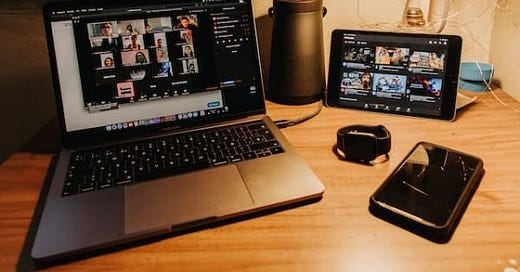“The screen has become a barrier to genuine human connection, turning every conversation into a performance and every meeting into a marathon of mental gymnastics.”
— Digital Wellness Expert Sarah Chen
The phenomenon now universally recognized as "Zoom fatigue" represents more than mere tiredness from video calls. It's a complex neurological and psychological response to the unnatural demands of digital communication that our brains weren't designed to handle.
Unlike face-to-face interactions, video conferencing forces our minds into overdrive. We're simultaneously processing delayed audio cues, analyzing pixelated facial expressions, and performing the cognitive gymnastics of appearing engaged while managing technical distractions. This creates what researchers call "continuous partial attention" — a state where we're never fully present, yet constantly alert.
The physical toll is equally significant. Hours of maintaining eye contact with a camera rather than actual eyes, combined with the unnatural stillness required for clear video transmission, creates muscular tension and mental strain. Our peripheral vision becomes confined to screen edges, eliminating the spatial awareness that normally helps us feel grounded in conversation.
Perhaps most concerning is how this digital exhaustion has normalized.
We've accepted diminished energy, shortened attention spans, and reduced empathy as inevitable costs of modern connectivity.
Many professionals report feeling more isolated despite being more "connected" than ever before. The solution isn't abandoning technology but reclaiming intentional communication. This means choosing phone calls over video when faces aren't essential, scheduling buffer time between virtual meetings, and prioritizing in-person interactions whenever possible.
Take Back Control of Your Digital Well-Being
Take back control of your digital well-being today. Audit your weekly video call schedule and replace at least three virtual meetings with phone calls or in-person conversations.
Better yet, step away from the screen entirely and redirect your time, talent, and presence to embracing the magic of hugs and handshakes at Encounter 360° Tampa Bay next February. The screen may connect us instantly, but only genuine presence can truly connect us deeply.





My Zoom interactions today are confined mainly to a single person—interviewing on Getting Unstuck or chatting with a friend. However, I recall organizing and attending larger Zoom meetings and experiencing much of what you describe here, Dennis. Honestly, it's one reason I backed away from 360° and similar meetings.
I prefer Zoom for 1:1 conversations because, as you know, a lot of information comes to us visually. (Melissa just did a powerful piece on that related to the hospitality industry.) That said, I would love to be in a position to actually sit down with a friend. Most of mine don't live in NYC.
Your advice on taking breaks is wise. And speaking of which, it's time to make breakfast! Ha!
So true, Dennis! I know the neurological toll it takes on us, but the difference between face-to-face and digital conversations cannot be overstated. There are days that by 2 or 3 in the afternoon after 4 or 5 zoom calls, I'm wiped out. It's not that I don't enjoy the people I'm speaking with, but the zoom fatigue is real. Thanks for bringing this to light and for making Encounter 360 real, too. I'm excited to be going in February 2026!